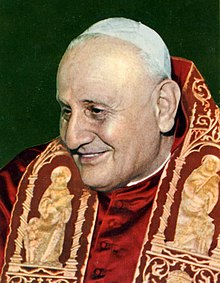I wrote this piece for my church newsletter, but I thought I'd share it online, too.
"The glory that you have given me I have given to
them, so that they may be one, as we are one…” (John 17:22)
 |
| Luther posts his 95 Theses, October 31, 1517 |
Halloween is approaching, and that
means we in the Lutheran Church are getting ready to celebrate the 499th
anniversary of that momentous All Hallows Eve when Martin Luther nailed shut
the coffin of the Middle Ages by posting a list of ninety-five debate topics to
the door of the Castle Church in Wittenberg, Germany. His challenge to the
authority of Church teaching changed the course of Western civilization, but
split the Christian faith into a division between “Protestants” and “Catholics.”
Today, after almost five centuries of—sometimes violent—division, the split
seems to be healing.
What does it mean to you to be a
Lutheran, I wonder? I grew up with a dyed-in-the-wool Lutheran mother, but all
I remember learning about our heritage as a child was that we were the people
who weren’t the Catholics. Catholics,
I was told, had to go to confession and repeat special prayers to work off
their sin while we Lutherans were simply justified by grace through faith. How
little I understood in those days the beauty of the tradition which formed Martin
Luther and which he sought only to reform,
not to replace.
Over the years I’ve developed a
deeper respect for our Roman brothers and sisters. It was the Catholic monastic
tradition which saved the culture of antiquity during the Dark Ages. Catholic
spiritual practice also gave us contemplative prayers, the services of the
hours, the beautiful order of mass which Lutherans still observe, and the
significance of the liturgical year which include the pious observances of Ash
Wednesday, Lent, and Holy Week (some of my favorite things!).
In the early 1960’s Pope John XXIII (recently canonized as a saint by the Roman Church, but already celebrated for decades in the Lutheran liturgical calendar) opened the windows of the Catholic Church and let worshipers talk openly with their Lutheran neighbors. He also adopted one of the most striking reforms made by Martin Luther, the vernacular mass. In exchange, he gave us the practice of moving altars out from the wall so celebrants could face the congregation, and began the tradition of sharing the peace inspired by Jesus’ words in Matthew 5:24.
For over fifty years Lutheran and
Catholic theologians have been in conversation to iron out our
differences. I’ve taken part in theses
dialogues myself from time to time, but I amuse myself by thinking that this
conversation has been going on successfully for decades around the dinner
tables of members of my congregation.
 |
| Pope Saint John XXIII |
John, now in his mid-eighties,
has been a member of Faith practically since the church was built. His wife,
Mary, is a faithful member of Saint Anselm Catholic Church. They have been
married for over sixty years. There are no doctrinal differences which have
kept them from loving each other. Neither were there insurmountable religious
disputes between the Catholic Tom and his Lutheran bride, Harriet.
When I visited Harriet in her later years to give her the sacrament, Tom—who would
not receive with his wife per the church teachings of his youth—still piously
knelt on his living room floor when I elevated the host and pronounced the
words of institution. To him, the promise of Christ’s true presence in the
Eucharist superseded the differences between denominations. These are just two
of the many Lutheran-Catholic couples in our congregation who have long ago
realized that what our two traditions have in common is far more important than
the issues upon which we disagree.
I’m very excited about the “Statement
on the Way” which was recently approved by the ELCA Churchwide Assembly and the
US Conference of Catholic Bishops. This document highlights thirty-two points
of agreement between our denominations and, God willing, will make straight the
highway to full Eucharistic sharing. I don’t believe our two communions will
ever merge back into one, and I don’t think they should. Each of us, on our own
journey, has developed a unique personality with which we can bless the other
and make comfortable spiritual homes to accommodate the different spiritual
needs and tastes of the faithful in Christ. But we can, as separate bodies,
proclaim the unity we share in Jesus Christ—the one who came to experience our
suffering so we could be present for the suffering and healing of the world.
As we approach the 500th
anniversary of the Reformation, let’s keep praying for the unity which we will
proclaim through the sharing of the body and blood of Christ. In a time when we
have seen the legalization of same-gender marriages and the election of an
African American US president, anything
is possible.
A message close to my heart as the Catholic son of a mixed marriage, of two parents who were products of mixed marriages. They'll know we're Christians by our love. Mom is well and hopefully we can receive together in addition to worshiping together. God is good, all the time. -Scott
ReplyDelete